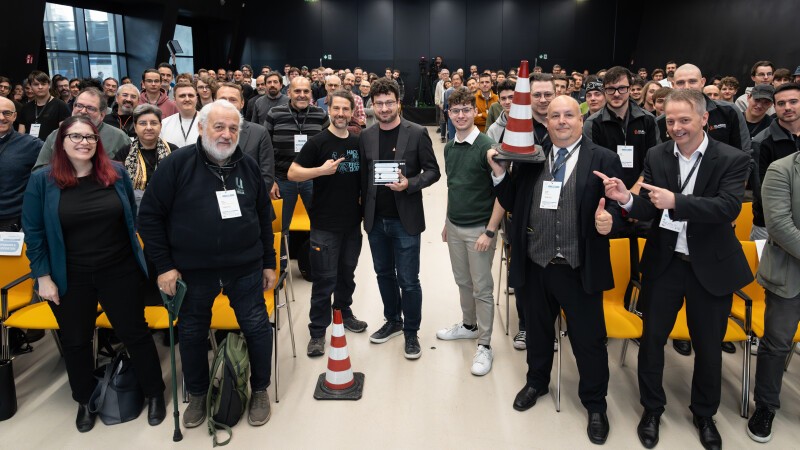
Whenever you come across an unknown media file or a strange link that won’t open with any standard application, there’s always one program that comes to the rescue: VLC .
This player works reliably on any system, supports formats long forgotten by the industry , and remains completely free thanks to a man whose name rarely appears in the news: Jean-Baptiste Kempf.
This week, he received the European SFS Award 2025, awarded by the Free Software Foundation Europe . The ceremony was held in Bolzano, where the SFSCon conference, dedicated to free software development, was taking place .
Kempf himself has long been a prominent figure in the community, responsible for VLC’s usual freedom of use. He has repeatedly explained why the project maintains its funding model and refuses to give in to investor pressure. When asked about venture capital proposals, the developer responded bluntly:
“So far, no action has been taken, because any change would require a business model that would actually benefit users. Most of the proposals have boiled down to installing toolbars and other junk software along with VLC. We’re not interested in that.”
His stance has kept the project away for many years from intrusive advertising , data mining, and other monetization methods that would turn an intuitive utility into yet another platform for promoting unnecessary services.

VLC’s history began in 1996 as a student experiment at the École Centrale Paris , an engineering school that later merged with CentraleSupélec . The French magazine Libération detailed the project’s early stages, including one surprising detail: the telecommunications company Bouygues offered to finance faster interconnection lines between buildings if the team could find a way to stream Télévision Française 1 signals.
The students, of course, used the new infrastructure not only to broadcast experiments: they also tested Doom over the network. The only MPEG-2 file they had available, a 20-minute excerpt from GoldenEye , proved useful during the tests. For this reason, VLC 1.0.x was codenamed ” GoldenEye .” The authors jokingly recalled that this name had nothing to do with the Bond plot: it was the name of Ian Fleming’s villa in Jamaica.
Initially, the development consisted of two components: VideoLAN Server, which transmitted MPEG-2 streams, and VideoLAN Client, which played them. Over time, these components merged, the server’s functionality migrated to the application, and VLC evolved into a standalone streaming tool. This is why the name has long since become recursive and now stands for VLC Media Player , although the program has long done much more than just play files.
Kempf’s contribution goes beyond writing the source code: the project’s contributors have included over 1,000 developers over the years . He arrived at École Centrale Paris in 2003, joined the VLC team, and when alumni left the university in 2006 and the initiative was in danger of dying out, he took over. Since then, he has coordinated the project’s development and, in 2012, founded Videolabs to ensure ongoing support for the infrastructure, builds, and integration.
It also has its own culture of small details. The glowing construction cone used as the app icon is a tribute to the VIA student association, known for its passion for ” souvenirs ” in the form of street items after raucous parties . This cone decorates the interface. The team chooses code names for releases drawn from the Terry Pratchett universe. There was one exception: version 2.2.1, released shortly after the author’s death in 2015, was simply named ” Terry Pratchett.”
Today, VLC is considered one of the most recognizable free software projects, and its sustainability owes much to the man who chose to preserve the idea of shared access rather than commercial compromises. It was this integrity that the European organizers recognized when awarding the prize: Kempf’s contributions have long been an integral part of the cultural fabric that sustains the entire open source ecosystem.
Follow us on Google News to receive daily updates on cybersecurity. Contact us if you would like to report news, insights or content for publication.
